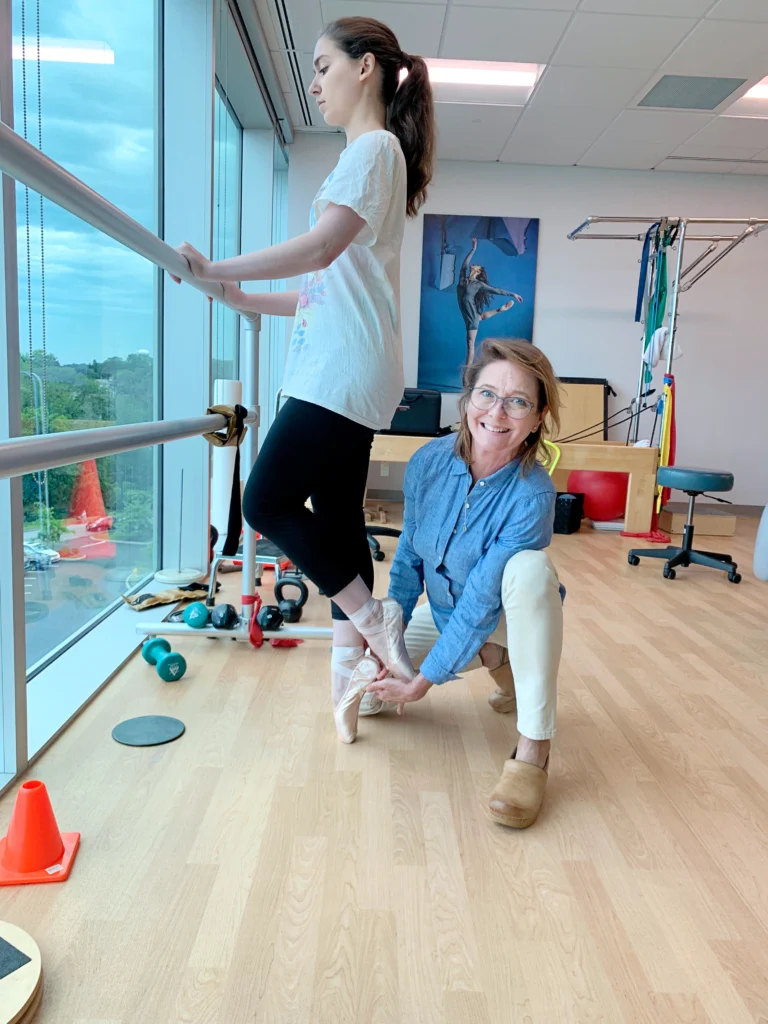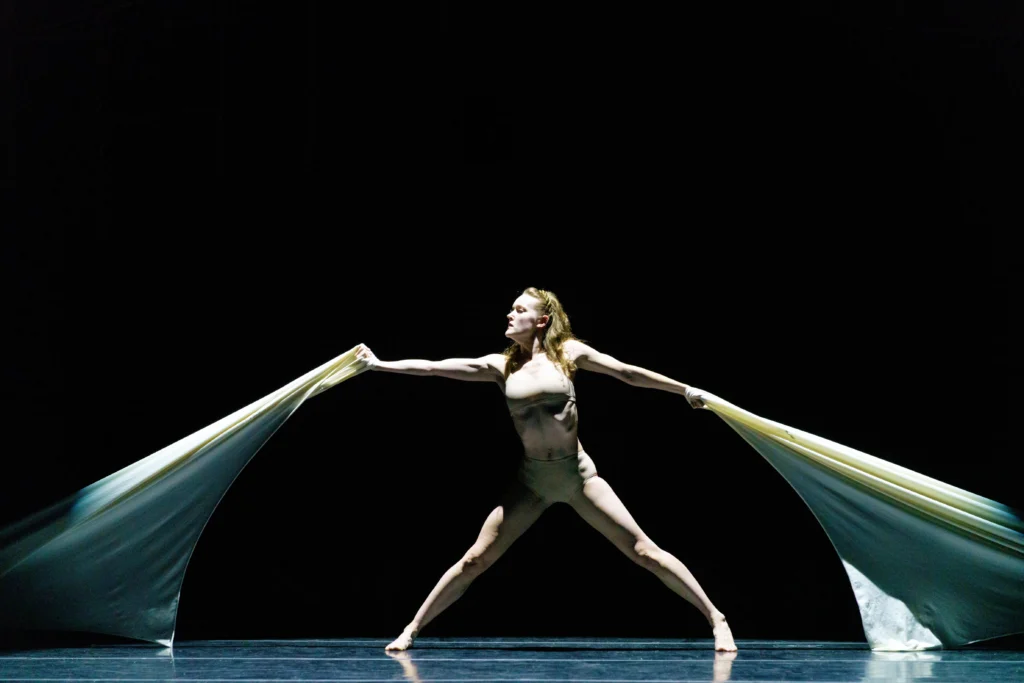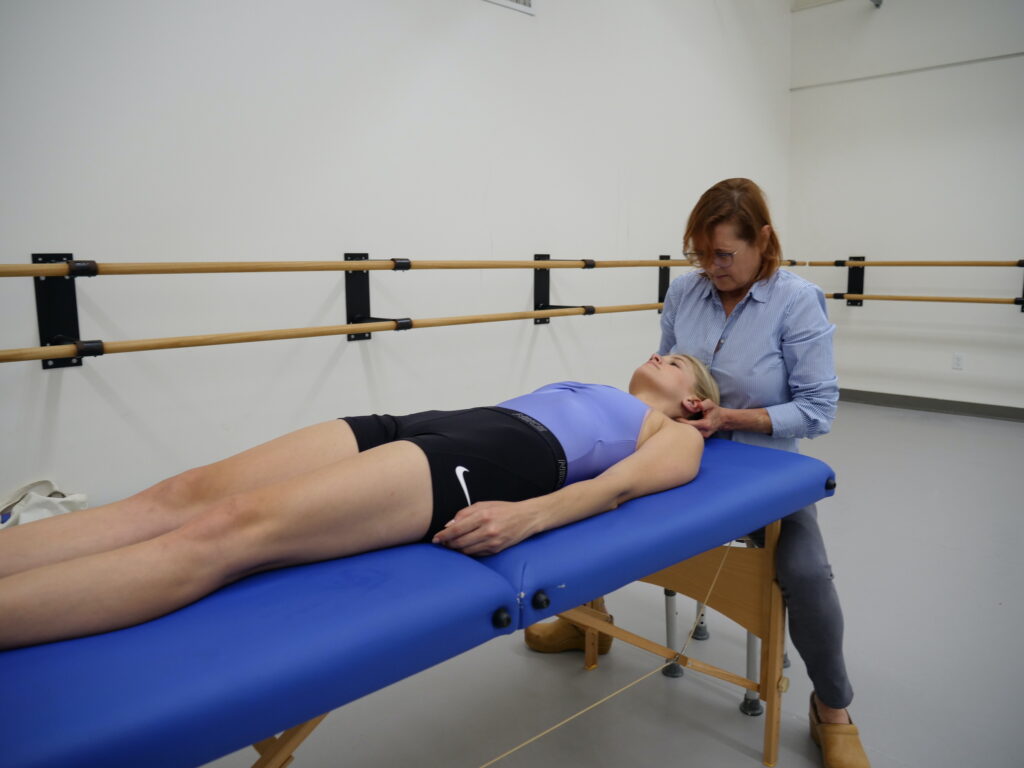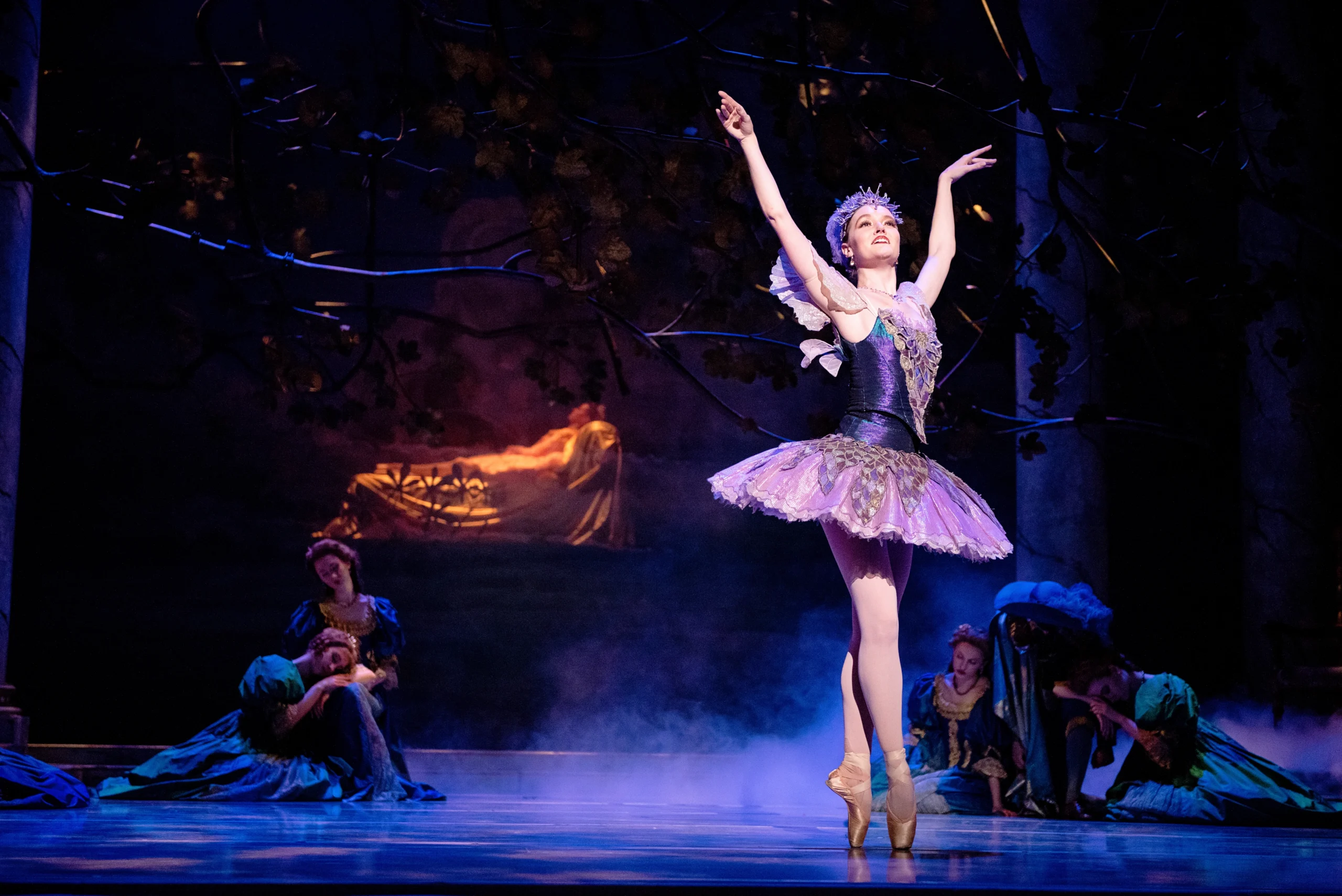From Dancer to Physical Therapist: A Future and an Established PT Discuss This Common Career Transition
A trusted physical therapist can be one of the most essential relationships in a dancer’s life, so who’s more fit for the job than a former dancer? Given the intertwined nature of dance and physical therapy, it’s no surprise that many artists pursue becoming a PT after retiring from the stage.
In fact, Sarah Lapointe plans to do just that. After eight years with Charlotte Ballet, Lapointe recently took her final bow with the company and announced her acceptance to Wingate University, where she will pursue her PhD in physical therapy. Pointe spoke with Lapointe and Jennifer Davis, a former Pittsburgh Ballet Theatre soloist who is now resident physical therapist at Ballet RI and University Orthopedics, to get the scoop on what former dancers bring to the world of physical therapy.
How did each of you become interested in physical therapy as a profession? It usually begins with an injury…
Sarah Lapointe: My senior year of high school, I was very busy with auditions and my regular school schedule. Ultimately, I overworked my body and became injured—a stress reaction in my hip. Injury caused me to step back and reevaluate some things. I saw a physical therapist, who gave me a regimen and helped me heal. This was my aha moment; it opened my eyes to the world of physical therapy. I could see myself transitioning into that world one day.
Jennifer Davis: When I was 14, I was training in New York City. I had some foot pain, so I went to a pediatrician, who wrote me a prescription for Pilates. I also had to take six weeks off from dancing. I completed the Pilates classes—with this really mean and strict teacher [laughs]—but by the time I was done, I had no more foot pain.

When I was dancing at PBT, the surgeon at the University of Pittsburgh Medical Center was very supportive of the company. He got us a Pilates reformer, and I started teaching the other dancers what I had learned about cross-training thoughtfully. I realized that I felt comfortable explaining movement to people and enjoyed the serious academic nature of physical therapy.
Speaking of academics, physical therapy requires a fair bit of education. How did you balance college with your ballet careers?
SL: I graduated from high school in 2015 and started working on my undergraduate degree right away. I was able to earn my BS in kinesiology from California Baptist University completely online, which meant I could balance studying with my dancing career at Charlotte Ballet.
JD: I started my undergraduate degree toward the end of my career at PBT, and by the time I retired from dancing, I had my BA in dance from SUNY Empire State College. When I decided to pursue physical therapy, I had to complete my GRE exams, which, as Sarah knows, require a lot of hard work. I then went on to earn my Master of Science in physical therapy at the University of Rhode Island.
Jennifer, what advantages do you think a dance career lends to one in physical therapy?
JD: I think sometimes medical professionals shy away from seeing dancers go to extreme ranges of motion. They want to rein it in because it seems safer, but I have a really good understanding of why dancers need to get to those extreme ranges. The feeling of being able to control those movements makes you feel so successful as a dancer, so I try to work on those details.
Also, as a physical therapist you get a feel for looking at a person’s anatomy, knowing what they are trying to accomplish as a dancer, and helping them get as close to that as possible.
Sarah, as a dancer what do you look forward to bringing into your physical therapy career?
SL: I’m excited to give back to the community that I’ve spent so much of my life in, to help dancers prolong their careers, and to share what I’ve learned from experience.
Having a dance background, you’re able to establish a different level of trust with the artists. It can be scary seeking treatment; you are usually visiting someone who doesn’t know about dance. Working with someone who knows dancers need to bounce back quickly and strong is comforting, because sitting on the sidelines can be earth-shattering. It’s a dancer’s livelihood.

Jennifer, how do you handle someone who is struggling with being on the sidelines and is eager to get back onstage?
JD: Having been in the career, I really appreciate its short timeline. It’s so hard to miss a certain role—even taking two months off is such a big sacrifice. I talk to the dancers about their longevity and discuss it in terms of their specific goals. It can be quite a heartbreaking negotiation, and it’s always hard to step back because of an injury, but we also want to be walking in our 50s. I talk about the reality of it; dance is really important, but your whole life is most important.
Such a good reminder to look at the bigger picture.
SL: That’s partly why I am making this decision [to step back from dancing and pursue physical therapy]—I’m starting to feel things in my body, so I’m trying to think about the longevity of my life, not just my dance life.
How can those still in their performance careers protect their longevity as dancers and as functioning humans?
SL: Cross-training. The amount of dancers who don’t cross-train is quite shocking! I go to the gym and lift weights—nothing too heavy, just enough to keep my strength up in different ways, depending on the repertory. Dancers go from classical, all the way up on their toes, to contemporary, where they’re down in a push-up position. When you tailor cross-training to your own body, it can really supplement your dancing.
JD: Consistency with cross-training is key. Sure, if you’re doing a lot of contemporary work, get your cross-training lower to the ground. If it’s classical, work the details of the hips and feet more. What’s most important is that you don’t overtrain or undertrain; build a base layer, and adjust it based on your dancing schedule. Don’t suddenly make everything harder and heavier because of a certain role, and also don’t completely skip it when you get busy.
The time you take to cross-train is time to be in touch with your body in a different way, without someone giving corrections the whole time. You’re learning your body in a different context, getting new knowledge and awareness.

That’s true! Our bodies become so used to the rhythm of a ballet class, it can be tough to feel tuned in and aware of how they’re actually feeling.
SL: I’ve noticed this in myself and the dancers I’ve worked with: We sometimes forget to listen to our bodies. Pay attention when something has been bothering you for a while, and know when it’s time to get it checked out.
JD: The mind/body/emotional state you’re in can greatly change the way you’re dancing. You can dance when you’re feeling happy and when you’re feeling depressed, and they are so different. Your body can really take it all on. Maintaining your emotional state is just as important as maintaining your toenails [laughs].
And sometimes just as difficult!
JD: Just remember that the human body is very resilient. Most of the time it’s going to be okay. Pay attention to your body, and trust it.







